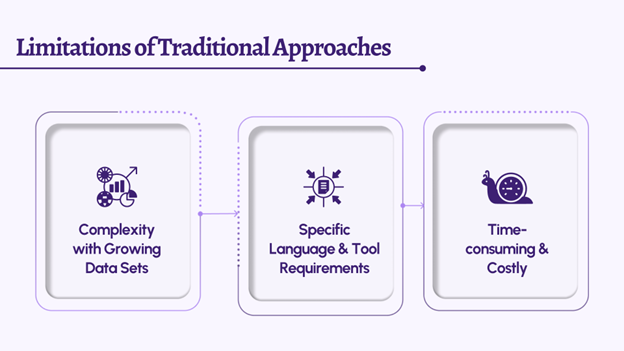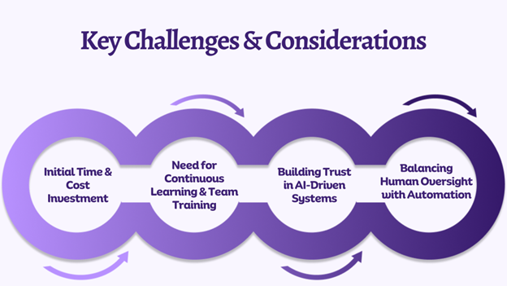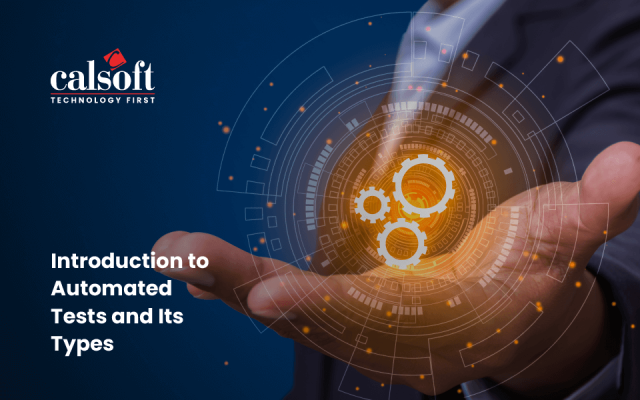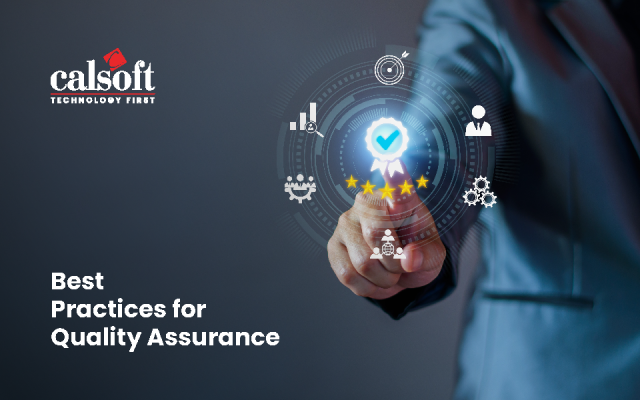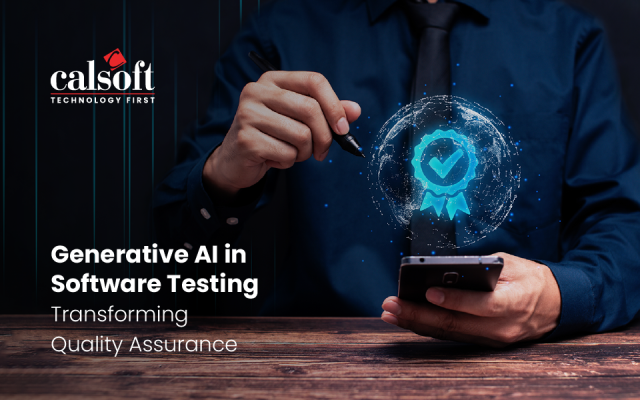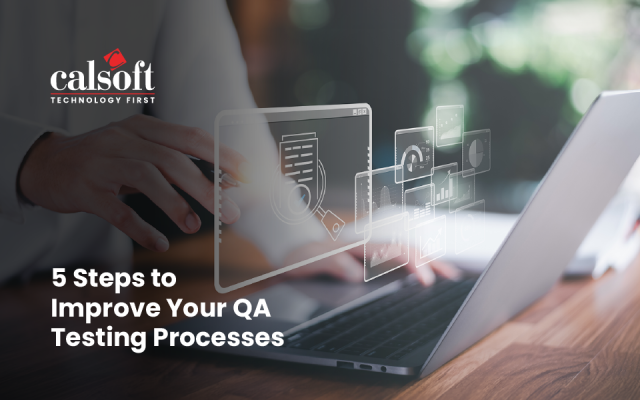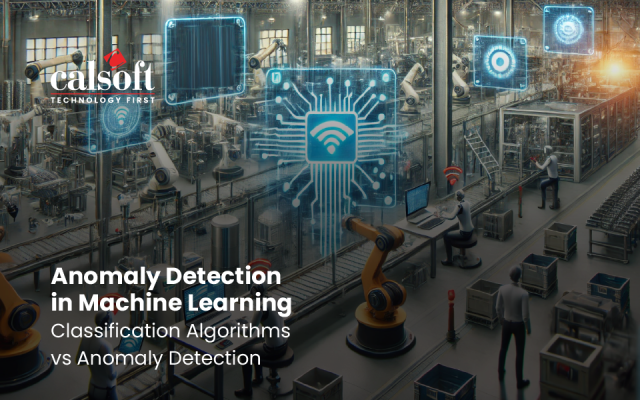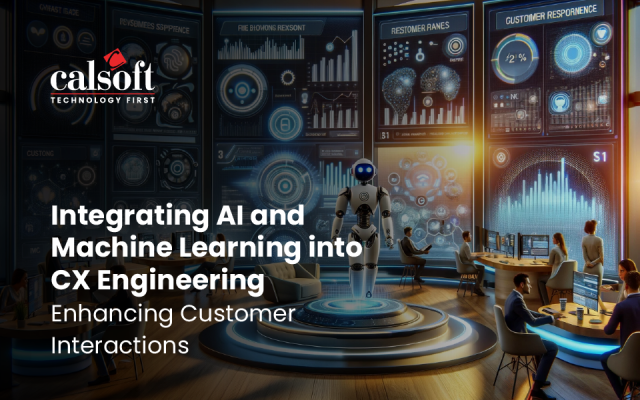Traditionally, testing was a manual and a time-consuming task. Test engineers need to spend endless hours running tests by hand, searching for bugs, and documenting each result. Then came the 2000s, bringing automated tools that sped up the process and reduced errors. However, these tools required constant updates and often missed critical issues, leaving gaps in the testing process.
Fast-forward to today, and testing has evolved significantly. The emergence of key technologies such as Machine Learning (ML) and Artificial Intelligence (AI) have impacted the software development and testing processes. ML-powered test impact analysis now plays a pivotal role in the software industry. It predicts the impact of code changes, prioritizes the most critical tests, and streamlines the entire testing workflow. This modern approach saves time and makes your software more reliable and robust.
As per Grand View Research, the global AI-enabled testing market is projected to grow to USD 2,746.6 million by 2030, unveiling a CAGR of 20.7% during the forecast period.
This journey into modern testing methods will provide with the skills needed to use the full potential of latest techniques. Continue reading the blog to explore how the advent of technologies such as ML and AI have influenced testing and Quality Assurance (QA) process.
Traditional Test Impact Analysis Methods
Traditional impact analysis methods help determine which tests to run after code changes. These methods improve efficiency by focusing on the most relevant tests, saving time and resources. However, as your projects grow more complex, these approaches face challenges in managing dependencies, maintaining thorough coverage, and staying efficient.
Dependency-Based Test Selection
Here, you pick tests based on direct connections between the code and test cases. This approach works well for smaller projects but becomes complicated as your project grows. The challenge is managing these dependencies and avoiding gaps in testing.
Selective Test Running
You focus on running tests that are most likely affected by recent code changes. This method saves you time compared to running every test. However, you need a deep understanding of your codebase and accurate criteria to ensure you get all critical tests.
Manual Analysis
You rely on your expertise to decide which tests to run. This approach gives you flexibility but requires much effort and is prone to human error. Due to the time and effort involved, manual analysis becomes more challenging to maintain as your projects grow.
Limitations of Traditional Approaches
Here’s where traditional methods fall short:
- Complexity with Growing Data Sets: Managing more tests and dependencies becomes harder, leading to inefficiencies.
- Specific Language and Tool Requirements: You often need tools or programming languages, which can limit your flexibility and adaptability.
- Time-consuming and Costly: Running extensive test suites, mainly manually, takes up significant time and resources and becomes more complex to sustain as projects grow.
Given these challenges, you’re likely considering more advanced methods to address these issues. Also read the latest blog on Enhance QA and Testing
Let’s explore how ML-powered test impact can transform your testing process.
What is ML-Powered Test Impact Analysis?
Data-driven models use ML-powered test impact analysis to predict how code changes affect your test suite. You analyze past test results and code changes instead of running every test or manually selecting them. This approach helps you determine which tests are most likely to uncover issues. The focus is on running the most relevant tests. This saves time and resources while improving the quality of your software releases.
The ML powered test impact analysis brings in several benefits.
- Avoid running of redundant tests. This speeds up the testing process.
- Identifies bugs earlier by prioritizing critical tests. This improves efficiency.
- Focusing on critical tests increases the chances of catching hidden bugs.
- Streamlining the testing process reduces time and resource use.
- Ensures critical areas are thoroughly tested. This boosts your confidence in releases.
- The method learns from your testing patterns. It becomes more effective over time.
Predictive Test Selection with AI/ML
Predictive test selection with AI offers a revolutionary approach to software testing. Instead of running your entire test suite or manually selecting tests, this method uses ML/AI to predict which tests are most relevant for specific code changes. This approach leads to a more efficient, targeted testing process that saves time and enhances accuracy.
Utilizing Machine Learning to Select Valuable Tests
The process starts by feeding historical data—past test results, code changes, and their outcomes—into a machine-learning model. The model identifies patterns and learns which code changes will likely cause test failures.
Every time you make a code change, the model evaluates it and predicts which tests will likely uncover issues. For example:
- If a change affects a module known for being buggy, the model will prioritize tests for that module.
- A minor User Interface (UI) tweak usually prompts UI-specific tests, but the model may select integration tests if it also affects data flow.
Dynamic Selection for Specific Code Changes
Unlike traditional methods that rely on a fixed set of tests, this approach adapts to the specific changes you make in the code. For instance:
- A minor UI change typically triggers UI-specific tests.
- Depending on the change’s scope and impact, a complex backend update might require integration and unit tests.
Static vs. Predictive Test Selection
| Criteria | Static Test Selection | Predictive Test Selection |
| Test Selection Basis | Pre-defined, manual | Dynamic, data-driven |
| Adaptability | Low (fixed tests) | High (adapts to each change) |
| Efficiency | Potentially runs unnecessary tests | Runs only the most relevant tests |
| Learning | None (static) | Continuous improvement from new data |
| Implementation | Simple, but less effective over time | Requires initial setup, but highly effective |
With predictive test selection, you gain a clear path to more effective testing. Implementing this in your workflows, ensures your testing efforts are not only efficient but also deeply aligned with your project’s needs.
Now let us explore how ML models are trained for test impact analysis
Machine Learning Model Training
Training a machine learning model for test impact analysis modernizes your software testing process. The ML-powered test impact analysis model uses historical data—test results and code changes—to learn and predict which tests are most likely to detect issues. This approach saves you time and improves the accuracy and efficiency of your testing efforts.
Training on Test Results and Code Changes Metadata
You must train the ML-powered test impact analysis model on a large dataset, including past test results and code change metadata. The model analyzes patterns, such as how specific code changes impacted test outcomes. For example, if a particular type of change often causes a test to fail, the model prioritizes that test when similar changes occur. Accurate data leads to better predictions and more reliable software.
Predictive Patterns for Test Case Impacts
Once you train the model, it identifies predictive patterns linking specific types of code changes with test outcomes. For instance, changes in a specific module often led to failures in database-related tests. The model automatically prioritizes those tests when similar changes happen again, ensuring targeted and efficient testing.
Integration with Tools
You must integrate these models into your workflow using appropriate tools. The model dynamically selects the most relevant subset of tests for each code change. It automates test selection, saving time and reducing the computational load on your testing infrastructure. This real-world application ensures you’re improving your testing strategy theoretically and actively applying data-driven insights to speed up your development cycle.
Machine Learning Model Training comprises using metadata from the test results and code changes over time to train models that detect patterns and predict the impact of code changes on test cases. Once trained, the model enables dynamic test selection by considering the test suite, build changes, and environments. It then prioritizes tests based on execution history, characteristics, and changes. The prioritized tests are further refined into a subset aligned with optimization targets, streamlining the testing process by focusing on the most critical tests.
Understanding how to train and apply these machine-learning models is just the beginning. You’ll next face challenges like ensuring model accuracy over time and dealing with test flakiness. Let’s explore these challenges and how to overcome them to maximize the benefits of ML-powered test impact analysis.
Challenges and Considerations
Implementing ML-powered test impact analysis offers many benefits, but it also comes with challenges that you’ll need to address. These range from the initial investment in time and resources to the ongoing need for team training and the balance between automation and human oversight. Understanding these considerations will help you maximize the effectiveness of your ML-driven testing strategy.
- Initial Time and Cost Investment: You must invest significantly in data collection, model training, and tool setup. Gathering historical data and setting up the necessary infrastructure requires time and effort.
- Need for Continuous Learning and Team Training: Regular training sessions update your team on ML advancements. You must ensure team members can learn new tools while managing their daily responsibilities.
- Building Trust in AI-Driven Systems: Developers might need more time to trust AI models initially. Providing explainable AI outputs helps build trust over time.
- Balancing Human Oversight with Automation: You must manage edge cases and unexpected outcomes with human judgment while maintaining quality through automation.
CalTIA: Elevating Your Testing Efficiency
Calsoft’s Machine Learning Powered Test Impact Analyzer (CalTIA) is the ultimate solution to optimize your test cycles and enhance efficiency. You can redefine your software testing by using CalTIA to bring focus and accuracy to the test selection process. It’s more than just automation—it’s a strategic approach that focus on the most critical areas of your code. By continuously analyzing your code changes, CalTIA ensures your testing efforts are effective, reducing unnecessary tests and improving the quality of your software releases.
You’ll benefit from a powerful set of features with CalTIA, designed to streamline every aspect of test impact analysis:
- ML-driven proactive test recommendations that identify the most important tests for each release.
- Deploy on-premises to safeguard your data security and maintain privacy.
- Zero-touch & non-intrusive workflow that operates with minimal manual input.
- Set up and deploy easily to integrate smoothly into your existing systems.
- Customize your setup to work across various code repositories, testing frameworks, bug-tracking tools, and Continuous Integration (CI) platforms.
CalTIA offers predictive test recommendations and a seamless, automated workflow. With CalTIA, you ensure that your testing strategy focuses on the most critical areas, making your process more efficient.
Incorporating CalTIA into your workflow can significantly enhance your testing strategy. With CalTIA, you can analyze code changes and recommend the most relevant tests. This improves efficiency and ensures that your software releases are more reliable.
With CalTIA, this process becomes even more efficient as the system continuously updates with new data, improving its future predictions and ensuring that your testing evolves alongside your codebase.
Future Trends in ML-Powered Test Impact Analysis
ML-powered test impact analysis will rapidly evolve as machine learning algorithms and related technologies advance. These improvements will enable you to make more precise predictions, helping you identify test cases most likely to uncover issues more accurately. As algorithms become more sophisticated, you’ll experience shorter training times, and the models will adapt more quickly to changes in your codebase.
The trend toward cloud-based AI testing tools is also significant. Moving your testing processes to the cloud gives you access to scalable resources that can handle large datasets and complex computations. This shift allows you to integrate testing seamlessly into your continuous integration/continuous deployment (CI/CD) pipelines, regardless of the complexity of your infrastructure.
Finally, ML-powered analysis will align more closely with DevOps and Agile methodologies. As these practices emphasize speed and flexibility, integrating ML models into your development workflow will streamline testing, reduce bottlenecks, and support faster, more reliable releases. These trends suggest a future where testing is faster, more innovative, and deeply integrated into your overall development process.
Conclusion
Imagine your software testing process becoming faster and more intelligent, seamlessly integrated into your development pipeline. That’s the power of ML-powered test impact analysis. Adopting ML-powered test impact analysis enhances your software’s reliability, reduces testing times, and gives you a competitive edge. The efficiency and accuracy brought by these tools are no longer just advantages—they’re becoming necessities in today’s fast-paced development environment.
Calsoft being a leading technology-first partner, the key focus is on accelerating customers’ journey towards adoption of digital transformation by delivering ‘just-in-time’ quality checks for their products and solutions. Kickstart your development with our tailor-made, ready-to-use solutions, and get a feel of how automation can help you reap benefits in terms of time, efforts, and cost savings.

